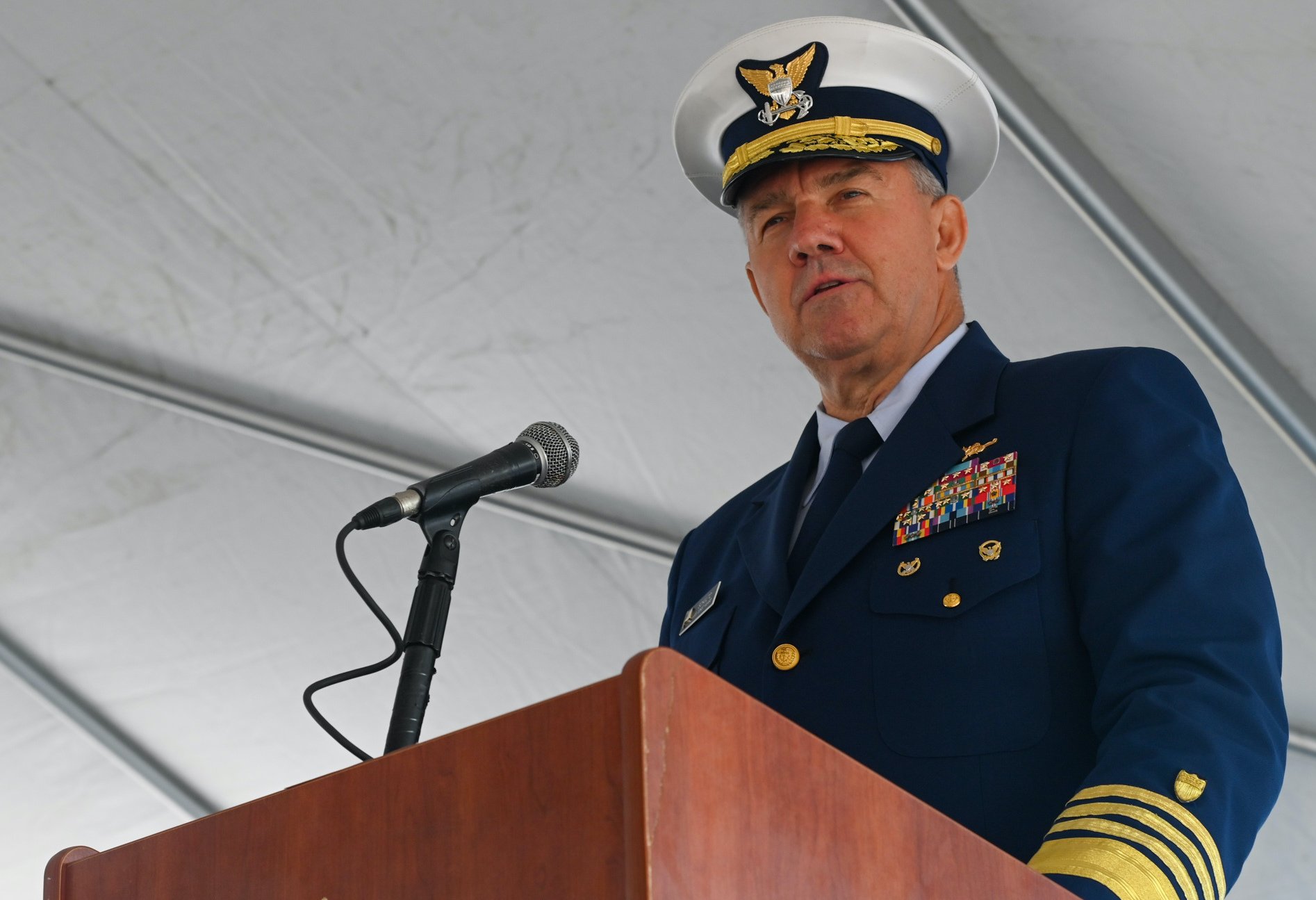
ARLINGTON, Va. – Coast Guard Commandant Adm. Karl Schultz is “guardedly optimistic” Congress will pass a budget before the continuing resolution that’s keeping the government operating through Feb. 18 expires.
If not, he told USNI News, there will be “high consequences for DoD and the Coast Guard.” He added, “a year-long CR would be devastating.”
This is the second continuing resolution in Fiscal Year 2022, and it restricts the Pentagon from spending above the previous year’s levels and closes off almost all new spending.
Defense Secretary Lloyd Austin this week warned of the “enormous” effects of failing to pass a budget for FY 2022.
The Coast Guard’s budget request is for $13.1 billion. He acknowledged a $1.3 billion backlog in shore maintenance, some of which can be addressed in the recently passed infrastructure bill and more funding could be allocated to reduce the backlog if the “Build Back Better” bill clears Congress.
So far, the service has been able to use more than $450 million in carryover funds from the last fiscal year without having to reduce operations, Schultz said in his presentation to the Navy League.
In speaking with USNI News, he added, he doesn’t think “we’ll have to take any operational cuts” if a budget is passed by the new deadline. But the continuing resolutions “create a little bit of ambiguity” across the board in the next year’s spending plan.
It also means if Congress passes the appropriations by the February deadline, the Coast Guard will be able to continue to pay bonuses and special pay, as well as meeting its obligatory 2.7 percent pay raise and hikes in Basic Allowance for Housing. “21 was a good year for us [in terms of overall budget] and 22 builds on that.”
The ability to continue bonuses and special pay is especially important to the Coast Guard in its retention efforts because unlike Defense Department services with their high turnover rates of first-term enlistments, the Coast Guard looks at offering its new recruits and newly commissioned officers a career of 20 years or more.
The service’s turnover in personnel is about 10 percent annually.
To boost retention, Schultz said the Coast Guard has adjusted personnel policies, so married service members can serve simultaneous tours at the same location. It brought in reservists to cover maternal and paternal leave absences at smaller stations to ease workloads in those cases.
Fifteen percent of the 42,000-member service are women. He said half of those women are married and often to other Coast Guardsmen.
What is at risk is money now earmarked “for new initiatives” in the personnel accounts. During his presentation, he outlined the Coast Guard’s moves to diversify its recruiting efforts. ”We need to match our ranks to the America we serve.” In this regard, he told attendees, “we’re moving the needle.”
Schultz said the recruiting goal is to attract 4,000 enlistments and 500 commissioned officers.
Schultz said based on the service’s experience with permanent change of station moves, or PCS, during the early months of the COVID-19, the Coast Guard has developed a “Float Plan” to deal with challenges of moving 4,000 service members during a time of high risk.
“I think ’22 is going to look pretty normal” for PCS moves.
With Congress’ history of failing to pass a budget before the fiscal year begins on Oct. 1 and the Coast Guard’s experience with sequestration under the Budget Control Act of 2011, he told USNI News, “we essentially don’t award large contracts in the first four or five months of the fiscal year.” The service also holds off awarding these contracts until the fiscal year ends.
Construction contracts for icebreakers to inland waterway craft are moving forward.
Another impact of continuing resolutions felt in the Coast Guard comes in shipyards that hold off taking its smaller contracts for maintenance in anticipation of much larger Navy contracts arriving.
“Now we’re moving money around” under the continuing resolution to pay obligations. But “we just got some additional [funds] for multi-year ship repair.”
Schultz estimated the Coast Guard lost about 10 percent of what it needed to operate as required, modernize, and recruit and retain the force it needed during the eight years of sequestration. During that time, government spending was essentially frozen at previous year levels.
Under the Department of Homeland Security, the service also did not receive the 12 percent bump to its readiness accounts that the Pentagon received in the first year of the Trump administration.
“We weren’t part of that conversation,” he said.
Schultz said that with the growth in the Coast Guard’s budget over the past three years and a potential budget increase of 3 to 5 percent annually, it can meet the requirements spelled out in the nation’s strategy statements.
“We need to be there,” Schultz said about its operations off Africa, in the Indo-Pacific and the Caribbean.





